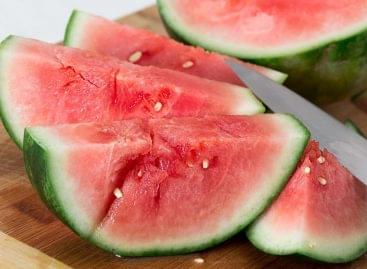Magazine: The world is drinking Hungarian water
Hungary’s mineral waters perform well at national and international competitions. Many international tests prove that their price-value ratio is just as good as that of famous international brands. According to the Hungarian Mineral Water Association, Hungary is one of the richest sources of mineral water in Europe. We have more than 500 deep wells and mineral water also springs from 120 wells and springs too. At the moment water is bottled from only one tenth of sources – 45-50 wells.
Demand for mineral water is increasing dynamically in Hungary. In the last decade and a half consumption got more than 10 times bigger. Consumption habits are changing: the popularity of waters with a lower, 500mg/litre mineral content is growing. The majority of waters bottled in Hungary are mineral water, but the segment of spring water, drinking water, fortified and flavoured water products has been expanding recently.
Product size is a very important factor in selling mineral water. In grocery stores 0.5-, 1.5- and 2-litre products are the most popular. In bars and restaurants 0.25-, 0.33- and 0.5-litre mineral waters sell well. According to the Central Statistical Office (KSH), 27.2 million cubic metres of water was extracted from surface waters, 225.9 million cubic metres came from wells filtering on lakesides and river shores, and 351.9 million cubic metres were extracted from the ground in 2015. It is the latter, the water in the ground that constitutes the mineral water base.
Now let’s examine Hungary’s mineral water export a bit more closely. In the category that is officially called ‘Water, mineral water and carbonated water without added sweetener’ we exported 61,155 tons in the value of EUR 6,986 thousand in 2015. In 2016 this increased by 46.6 percent to 89,629 tons in volume and by 42.5 percent to EUR 9.952 thousand in value.
Nearly 60 percent of the Hungarian mineral water export was sold in Romania and Slovakia last year. We sold 11 percent more mineral water in Romania and the Slovakian market expanded by almost 60 percent.
Our performance in the Czech Republic – although the base value was low – was the third best. Slovenia and Croatia bought less mineral water from us than before, but Austria and the USA purchased 10 percent more. In 2016 Hungary sold mineral water to 46 countries. A few years ago Szentkirályi Mineral Water Kft. signed a contract with a group of investors from Saudi Arabia. First they ordered 10 containers of still mineral water. By 2013 the company was selling 1 million litres of mineral water in the Middle East.
Hungary is also an importer of mineral water; in value import represents 34 percent of our mineral water export (EUR 3,366.8 thousand), in volume it is 17 percent of our export (15,122 tons). Our biggest import source is Italy, we buy 1,140 tons of mineral water from them.
The other category is officially called ‘Water, mineral water and carbonated water with added sweetener, and other non-alcoholic drinks.’ Products that belong here include soft drinks, sweetened and flavoured waters, fruit juices and other alcohol-free drinks, and they were sold to 113 countries all over the world in 2016. Demand for our products increased by 15.5 percent.
Our top 10 soft drink export markets – with a couple of exceptions – improved their positions considerably. Not only our sales revenue increased but also the quantity exported: it was up 12.5 percent at 269.6 thousand tons. In 2016 Hungary exported soft drinks and fruit juices in the value of EUR 151.8 million and imported them for EUR 107.9 million; 56 percent of our import came from Austria, Poland, the Czech Republic and Germany.
Related news
Related news
Drought, technological competition and collaboration: the domestic melon season has begun
The 2025 Hungarian melon season starts amidst serious challenges: the…
Read more >Tourism economy deteriorating, but better than the national economic average
In June 2025, 70% of tourism companies reported an increase…
Read more >Price increases, export declines, new consumer habits – this is how the poultry and egg market developed in the first half of 2025
Látványos változások jellemezték 2025 első félévét a hazai baromfi- és…
Read more >



